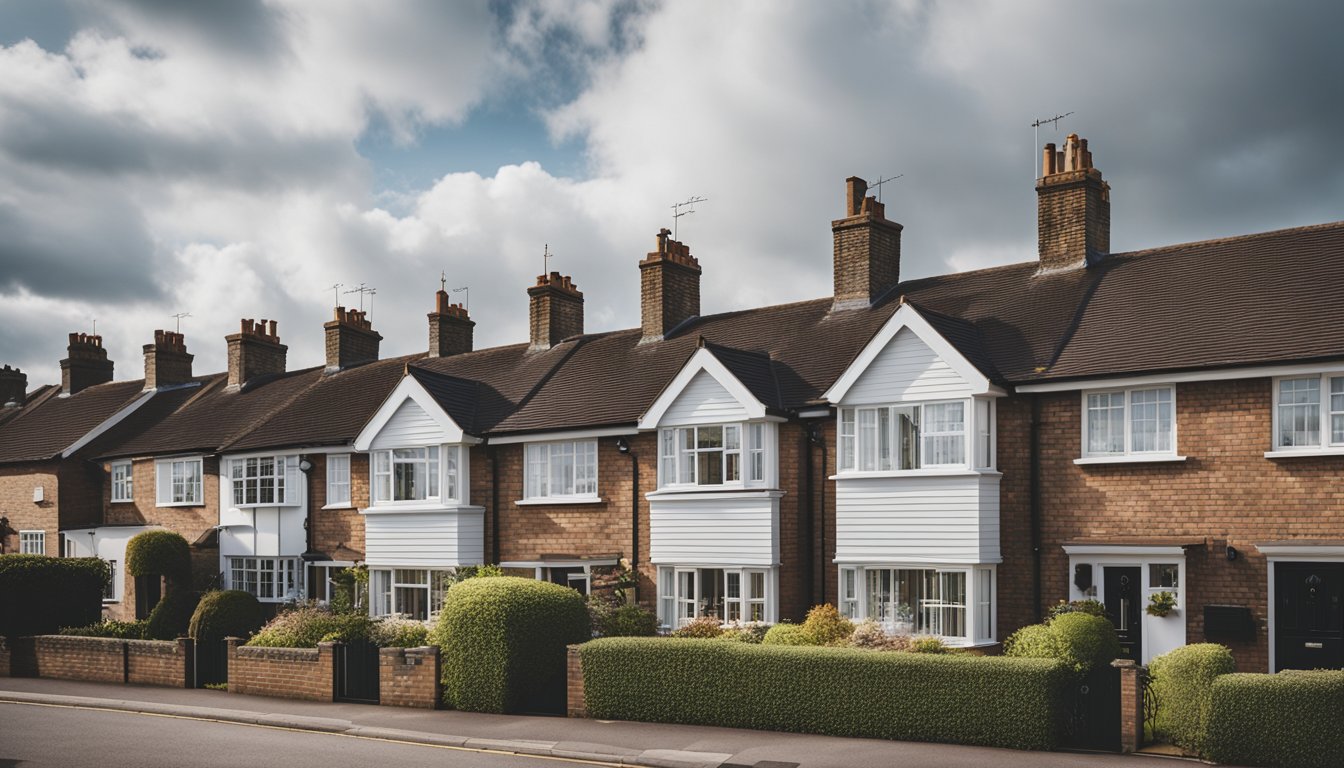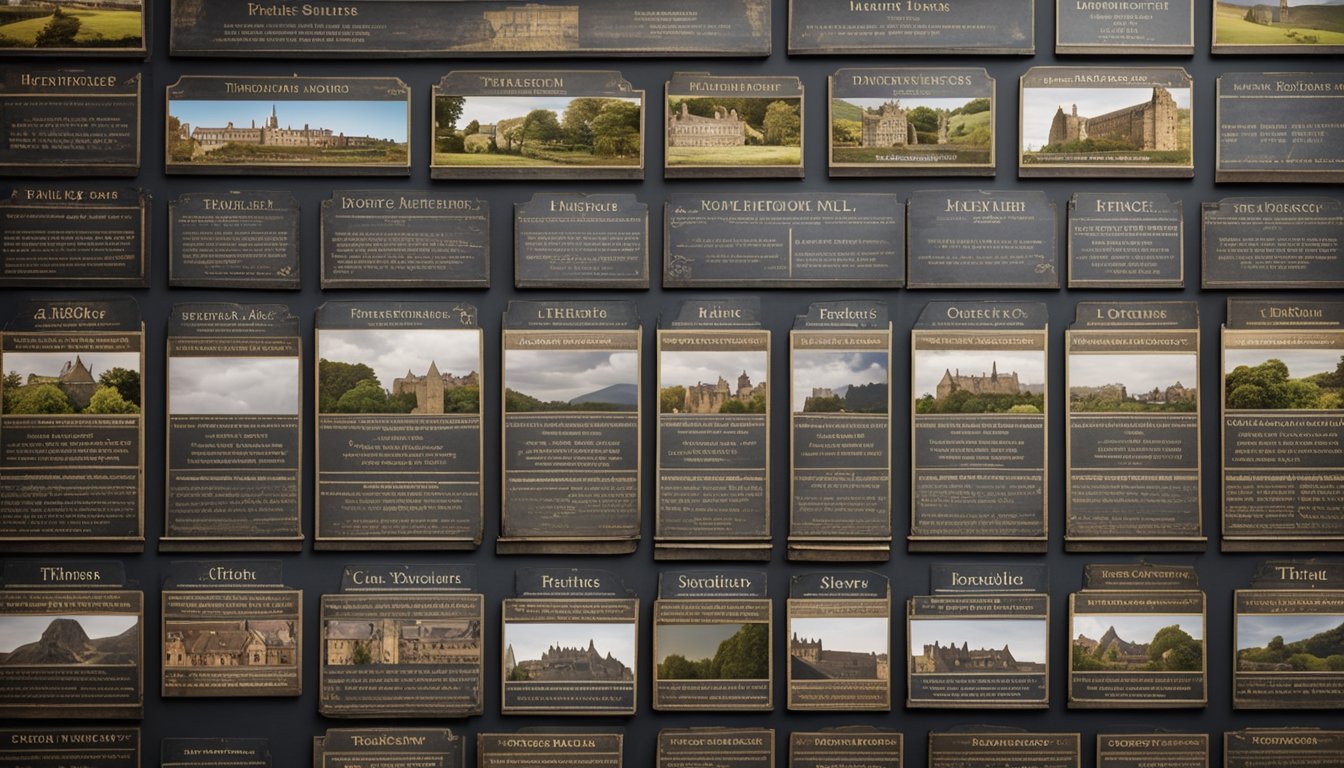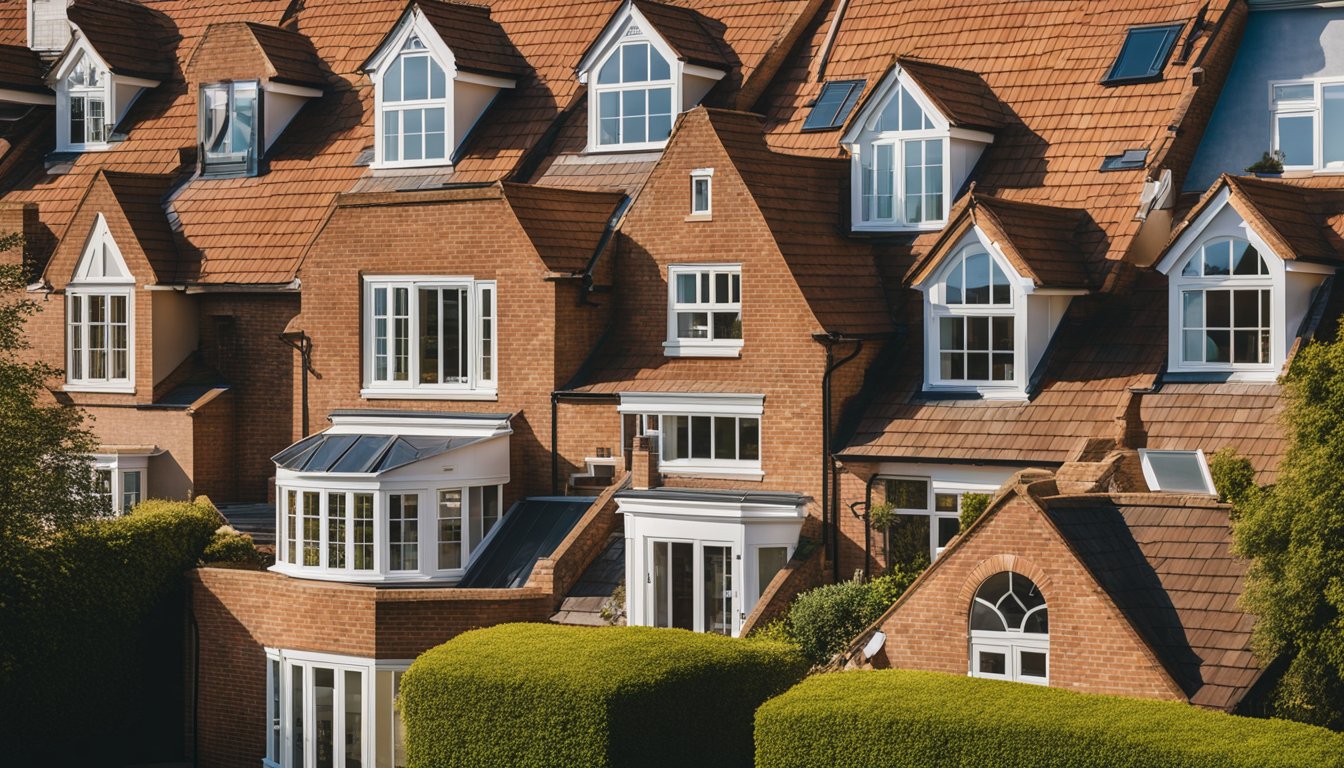Late updated: 30 Jun 2024 12:06
Written by: Oliver Bennett
Architectural Roof Styles For UK Homes: A Comprehensive Guide
Architectural roof styles in the UK are a fascinating blend of history and design. From centuries-old structures to contemporary homes, the landscape reflects the nation’s architectural evolution. Understanding the different roof styles can not only enhance the aesthetic appeal of your home but also improve its functionality and value.

Fans of historical architecture might recognise bell roofs on vintage buildings such as churches, while gable roofs are common in many suburban homes, offering robustness and ease of construction. There are numerous roof styles, each with its unique characteristics and suitable applications, which we will explore in detail.
The modern trends in UK roof design continue to evolve, incorporating new materials and sustainable practices. As homeowners, staying informed about these trends can assist us in making better renovation or building decisions. Let's dive into the diverse architectural roof styles that have shaped and continue to influence UK homes.
Key Takeaways
- Architectural roof styles in the UK have historical significance and aesthetic value.
- Various styles like bell and gable roofs are prevalent, each with distinctive features.
- Modern trends focus on new materials and sustainability.
Historical Evolution of UK Architectural Roof Styles

Throughout history, the architectural designs of roofs in the UK have evolved significantly, reflecting the social, cultural, and technological advancements of each era. From the intricate timber frames of Tudor homes to the ornate designs of Victorian structures, each period has left a lasting impact on the aesthetic and functional elements of roofs.
Tudor and Elizabethan Roofs
During the Tudor and Elizabethan periods, roofs were predominantly steep-pitched and covered with either thatch or clay tiles. This design was not merely for aesthetic appeal but also to combat the heavy rainfall common in England.
Key Characteristics:
- Steep Pitch: Useful for quick drainage of rainwater.
- Timber Frames: Exposed wooden beams that added structural integrity.
- Chimneys: Prominent, often elaborately decorated with brick patterns.
These features made Tudor and Elizabethan roofs instantly recognisable and functional, embodying the robust yet elegant ethos of the time.
Georgian Symmetry and Aesthetics
The Georgian era, spanning from 1714 to 1830, introduced a shift towards symmetry and proportion, heavily influenced by classical architecture. Georgian roofs were typically hipped or gambrel, with a focus on balanced design.
Key Characteristics:
- Hipped Roofs: Sloping on all four sides, facilitating better drainage.
- Slate Tiles: Favoured for their durability and aesthetic appeal.
- Symmetrical Facades: Complemented by the roofing structure, often featuring dormer windows.
Georgian architects prioritised uniformity and classical beauty, making this style popular among homeowners seeking elegance and refinement.
Victorian Innovation and Ornamentation
The Victorian era was marked by rapid industrialisation, which brought new materials and construction techniques, influencing the roof styles of the period. Victorian roofs often featured complex designs, with an emphasis on ornamentation.
Key Characteristics:
- Gothic Influence: Pointed arches and steep gables.
- Iron and Glass: Introduction of these materials allowed for more creative designs.
- Decorative Finials and Ridge Tiles: Adding to the ornate appearance.
Victorian roof styles reflected the eclectic and embellished tastes of the time, providing a stark contrast to the preceding Georgian simplicity.
Edwardian Era and Arts and Crafts Movement
In the Edwardian era (1901-1910), there was a shift towards simpler and more practical designs, influenced by the Arts and Crafts Movement. This movement emphasised the importance of craftsmanship and natural materials.
Key Characteristics:
- Gable Roofs: Simple, practical, and easier to construct.
- Terracotta Tiles: Often used for their aesthetic qualities and ease of installation.
- Overhanging Eaves: Designed for better protection from the elements.
The Edwardian period brought a balance between functionality and beauty, with a nod to traditional craftsmanship and natural materials. This era's roofs were practical yet gracefully integrated into the architectural landscape.
Modern Trends in UK Roof Design and Materials
In the UK, architectural roof design has evolved significantly, blending traditional elements with contemporary innovations. Homeowners and builders alike focus on aesthetics, durability, and sustainability when selecting roof styles and materials.
Contemporary Materials and Techniques
Modern roofing materials include aluminium, steel, and copper. These metals are not only durable but also resistant to extreme weather and fireproof. Furthermore, they provide a sleek, minimalistic look that complements contemporary architecture.
Flat roofs are particularly popular in modern designs. These roofs offer a minimalist aesthetic that is both practical and visually appealing. Cladding is another technique gaining traction, providing additional insulation and an attractive exterior finish.
For those looking to combine durability with style, metal roofing is a compelling choice. It's low-maintenance, saving both time and money for homeowners. Slate and clay tiles are also making a comeback when mixed with modern design elements, offering a unique blend of old and new.
Innovative Roofs for Extensions and New Builds
When it comes to new builds and extensions, innovative roof designs are at the forefront. Flat roofs are a go-to option due to their ability to create a seamless transition between indoor and outdoor spaces, perfect for modern living.
Hip roofs and gabled roofs are also popular choices, providing both aesthetic appeal and functional benefits such as better drainage and increased attic space. Mansard and gambrel roofs offer more living space under the roof, ideal for homes requiring additional room without expanding the footprint.
Materials like EPDM (Ethylene Propylene Diene Monomer) and TPO (Thermoplastic Polyolefin) are highly durable and offer excellent performance. These materials are particularly useful for flat roofs, delivering long-lasting protection and requiring minimal maintenance.
Sustainability and the Integration of Solar Panels
Sustainability is a major concern in modern UK roofing. The integration of solar panels into roof design is becoming increasingly common. These panels not only reduce the carbon footprint but also provide long-term savings on energy bills.
Green roofs are another sustainable option, offering environmental benefits and enhancing the aesthetic appeal of a building. These roofs absorb rainwater, provide insulation, and create a habitat for wildlife.
Incorporating energy-efficient materials and techniques is crucial for modern builds and renovations. Solar tiles are an innovative alternative to traditional panels, blending seamlessly with the roof and maintaining a sleek appearance. This integration supports both environmental goals and the homeowner's desire for a modern, cohesive design.
Frequently Asked Questions

In this section, we address some common questions regarding architectural roof styles for homes in the UK. We explore a variety of designs from modern to traditional, discussing their characteristics and popularity.
What are some small-scale roof designs suitable for UK homes?
For small-scale homes, popular choices include gable, hip, and shed roofs. The gable roof is classic and effective for water drainage. Hip roofs provide more stability and are great for regions with strong winds. Shed roofs, with their single-slope design, offer a modern look and are easy to construct.
Can you list modern roofing styles that are popular in UK housing?
Modern UK homes often feature flat roofs and metal roofs. Flat roofs give a sleek, minimalistic look and can be utilised for additional outdoor space. Metal roofs, made from materials like aluminium and steel, are durable, low-maintenance, and complement contemporary architectural designs.
What traditional roofing structures are most commonly seen in the UK?
Traditional UK homes frequently use pitched and mansard roofs. Pitched roofs, often covered in slate or tile, are prominent in older homes and cottage-style buildings. Mansard roofs, with their dual-sloped design, offer increased attic space and are seen in many historic buildings.
Could you name various roof shapes and their distinctions as seen in the UK?
Common UK roof shapes include gable, hip, and flat. Gable roofs are triangular and efficient for shedding water. Hip roofs have slopes on all four sides, providing extra strength and resistance to weather. Flat roofs, with little or no pitch, are often used in modern architecture and provide versatile space usage.
How do hip and sloping roofs differ in the context of British architecture?
Hip roofs have slopes on all sides, offering enhanced stability and weather resistance. In contrast, sloping roofs, which can be single or dual-sloped, focus on quick water run-off and are simpler in design. Both types are prevalent due to their practical benefits.
Which roofing styles were prevalent in UK homes at the start of the 20th century?
At the start of the 20th century, UK homes commonly featured Queen Anne and Edwardian styles. These styles often included steeply pitched roofs, with intricate gables and large overhangs. Slate and clay tiles were typical materials, reflecting the era's architectural preferences and available resources.
